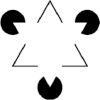Mind Perception Is the Essence of Morality
- PMID: 22754268
- PMCID: PMC3379786
- DOI: 10.1080/1047840X.2012.651387
Mind Perception Is the Essence of Morality
Abstract
Mind perception entails ascribing mental capacities to other entities, whereas moral judgment entails labeling entities as good or bad or actions as right or wrong. We suggest that mind perception is the essence of moral judgment. In particular, we suggest that moral judgment is rooted in a cognitive template of two perceived minds-a moral dyad of an intentional agent and a suffering moral patient. Diverse lines of research support dyadic morality. First, perceptions of mind are linked to moral judgments: dimensions of mind perception (agency and experience) map onto moral types (agents and patients), and deficits of mind perception correspond to difficulties with moral judgment. Second, not only are moral judgments sensitive to perceived agency and experience, but all moral transgressions are fundamentally understood as agency plus experienced suffering-that is, interpersonal harm-even ostensibly harmless acts such as purity violations. Third, dyadic morality uniquely accounts for the phenomena of dyadic completion (seeing agents in response to patients, and vice versa), and moral typecasting (characterizing others as either moral agents or moral patients). Discussion also explores how mind perception can unify morality across explanatory levels, how a dyadic template of morality may be developmentally acquired, and future directions.
Figures








Similar articles
-
Deconstructing moral character judgments.Curr Opin Psychol. 2022 Feb;43:205-212. doi: 10.1016/j.copsyc.2021.07.008. Epub 2021 Jul 28. Curr Opin Psychol. 2022. PMID: 34418790 Review.
-
The Theory of Dyadic Morality: Reinventing Moral Judgment by Redefining Harm.Pers Soc Psychol Rev. 2018 Feb;22(1):32-70. doi: 10.1177/1088868317698288. Epub 2017 May 14. Pers Soc Psychol Rev. 2018. PMID: 28504021 Review.
-
The myth of harmless wrongs in moral cognition: Automatic dyadic completion from sin to suffering.J Exp Psychol Gen. 2014 Aug;143(4):1600-15. doi: 10.1037/a0036149. Epub 2014 Mar 17. J Exp Psychol Gen. 2014. PMID: 24635184 Clinical Trial.
-
Moral Judgments of COVID-19 Social Distancing Violations: The Roles of Perceived Harm and Impurity.Pers Soc Psychol Bull. 2022 May;48(5):766-781. doi: 10.1177/01461672211025433. Epub 2021 Jul 10. Pers Soc Psychol Bull. 2022. PMID: 34247528
-
Moral typecasting: divergent perceptions of moral agents and moral patients.J Pers Soc Psychol. 2009 Mar;96(3):505-20. doi: 10.1037/a0013748. J Pers Soc Psychol. 2009. PMID: 19254100
Cited by
-
Social cognitive processes explain bias in juror decisions.Soc Cogn Affect Neurosci. 2023 Feb 23;18(1):nsac057. doi: 10.1093/scan/nsac057. Soc Cogn Affect Neurosci. 2023. PMID: 36264228 Free PMC article.
-
Neural responses to morally laden interactions in female inmates with psychopathy.Neuroimage Clin. 2021;30:102645. doi: 10.1016/j.nicl.2021.102645. Epub 2021 Mar 27. Neuroimage Clin. 2021. PMID: 33838544 Free PMC article.
-
Perceptions of intentionality for goal-related action: behavioral description matters.PLoS One. 2015 Mar 17;10(3):e0119841. doi: 10.1371/journal.pone.0119841. eCollection 2015. PLoS One. 2015. PMID: 25781315 Free PMC article.
-
Animals Like Us: Leveraging the Negativity Bias in Anthropomorphism to Reduce Beef Consumption.Foods. 2021 Sep 10;10(9):2147. doi: 10.3390/foods10092147. Foods. 2021. PMID: 34574254 Free PMC article.
-
People are curious about immoral and morally ambiguous others.Sci Rep. 2023 May 5;13(1):7355. doi: 10.1038/s41598-023-30312-9. Sci Rep. 2023. PMID: 37147324 Free PMC article.
References
-
- Alicke M. D. Culpable causation. Journal of Personality and Social Psychology. 1992;63:368–378.
-
- Alicke M. D. Culpable control and the psychology of blame. Psychological Bulletin. 2000;126:556–574. - PubMed
-
- American Law Institute. Model Penal Code. 1962. - PubMed
-
- Anderson S. W., Barrash J., Bechara A., Tranel D. Impairments of emotion and real-world complex behavior following childhood- or adult-onset damage to ventromedial prefrontal cortex. Journal of the International Neuropsychological Society. 2006;12:224–235. doi:10.1017/S1355617706060346. - PubMed
LinkOut - more resources
Full Text Sources
Research Materials
